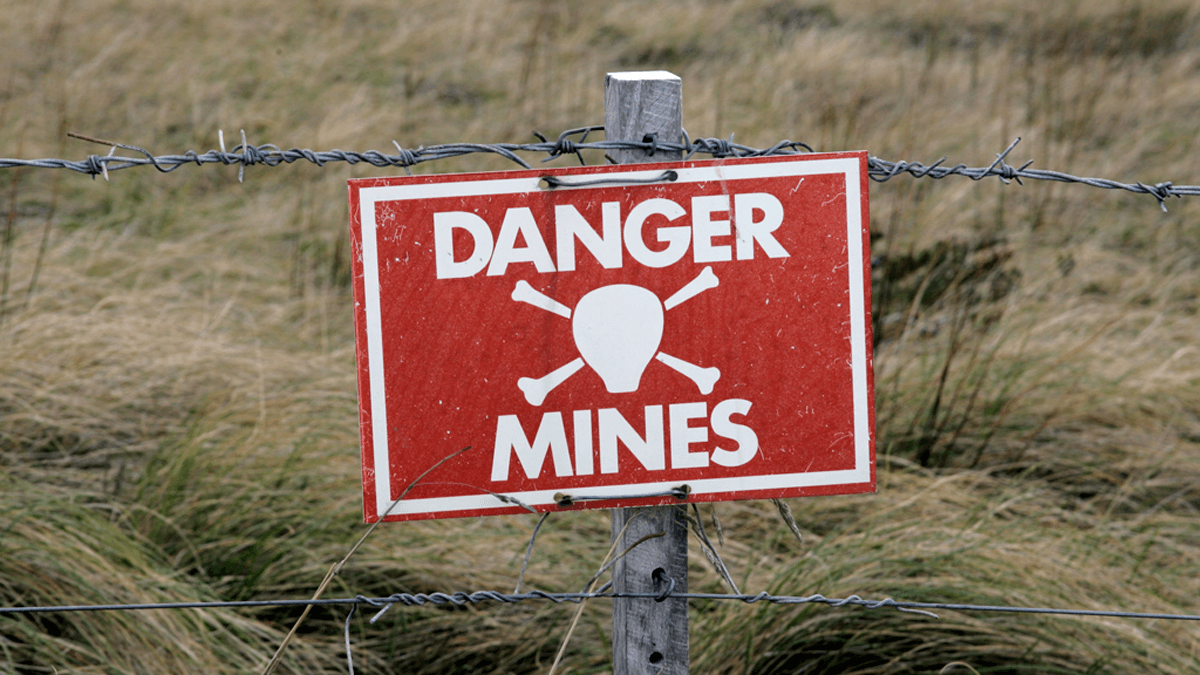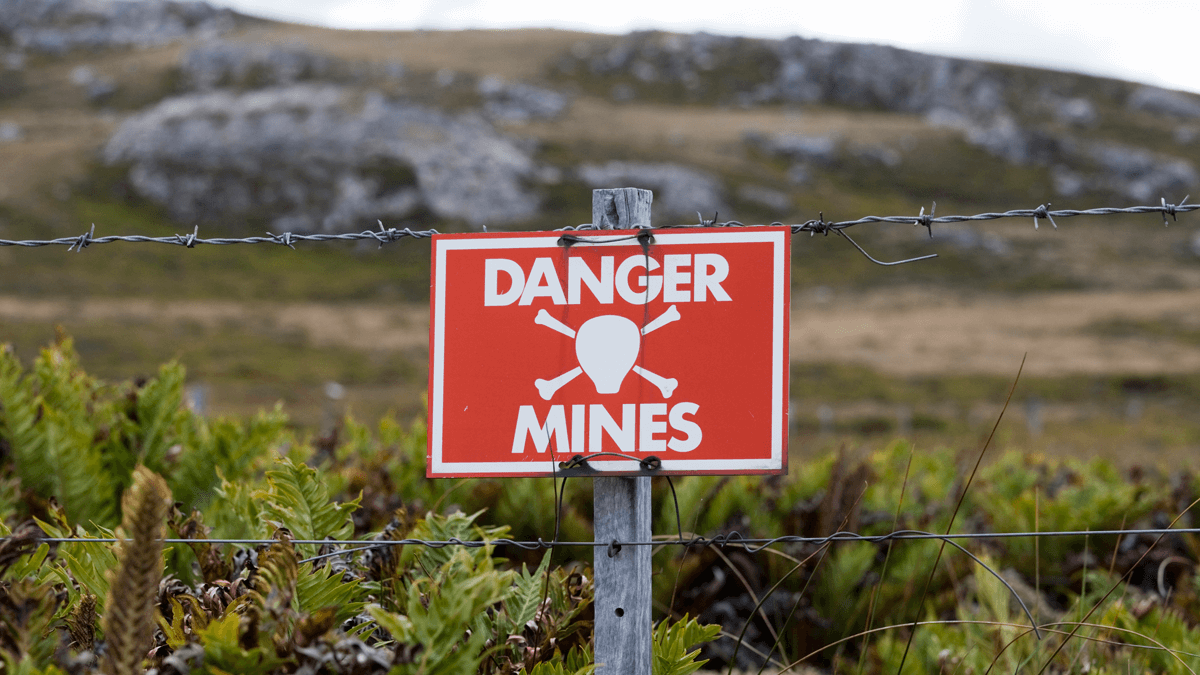It’s easy to take the anxiety out of high-stakes projects: 1. Brainstorm all assumptions that must be true for your project to succeed. 2. Have each team member vote on “certainty” & “impact” for each assumption. 3. Debate & consolidate votes as a team. 4. Develop a plan to investigate high-impact, low-certainty assumptions. 5. Drive each assumption from uncertainty to certainty. If an assumption is not true, it’s a project-killing “landmine.” Find it early, celebrate… and start your next project.
To see how this is done, view the video at Project De-risking with Minesweeper
A landmine is something that could blow up your high-stakes project. Consider 3 points: 1) Landmines pose a greater threat in unfamiliar terrain, so be extra careful outside your core. 2) We don’t like to think about unhappy thoughts–like landmines–so be diligent in investigating assumptions that could become landmines. 3) No one steps on a landmine they can see. So the team’s first job is to make all assumptions visible… and then determine which might be a landmine.
To see how this is done, view the video at Project De-risking with Minesweeper
Many refer to the new-market, new-technology quadrant of the Ansoff matrix as the “suicide quadrant,” given its high-failure rate. This need not be the case. With good planning, you can spot potential “landmines” much earlier, and take steps to either kill your project quickly, redirect it, or accelerate success. Do this by rating risk factors for impact and certainty… and then communicate your progress through Certainty Matrices.
More in article, How to Thrive in the “Suicide Quadrant”
A project landmine is something that blows up budgets, schedule and reputations. No one steps on one they can see. So why don’t we look for them harder and earlier in a project life? Because we’ve been conditioned to think that killing our project equates to failure. Instead, we should identify areas of uncertainty as early as possible. Celebrate when you kill your own project swiftly… and celebrate when you try hard and are unable to kill it.
View video, De-risking Transformational Projects
This is what product developers call the Ansoff Matrix quadrant where you pursue an unfamiliar market with unfamiliar technology. A great place to kill your career. But you can enter it with confidence when you apply new methods for de-risking transformational projects… moving from uncertainty to certainty to defuse potential “landmines.”
More in article, De-Risking Innovation: How to Thrive in the Suicide Quadrant
A Landmine can kill your project… but who steps on a Landmine they can see? When you convert assumptions and questions into facts, you make landmines visible and therefore harmless. A Launchpad is an unexpected, high-value customer outcome. Discover these before competitors to develop solutions in a “competition-free zone.”
More in white paper, Innovating in Unfamiliar Markets (page 13).






